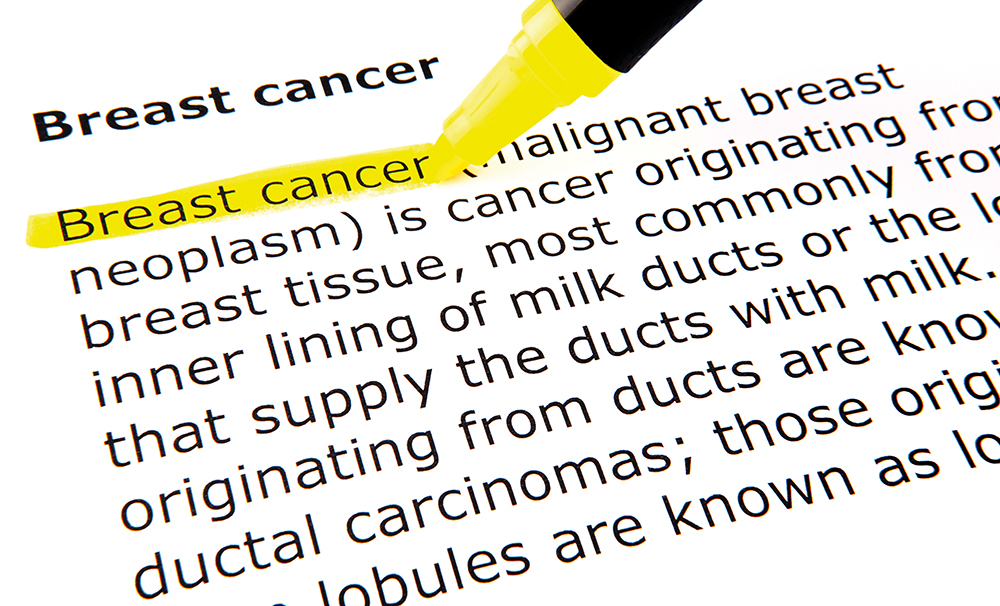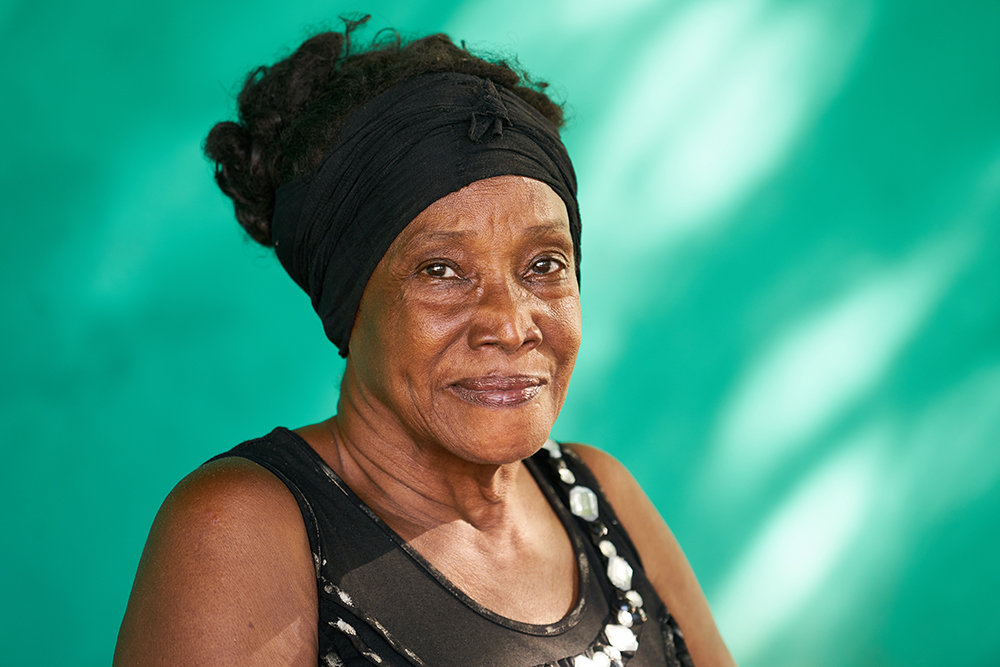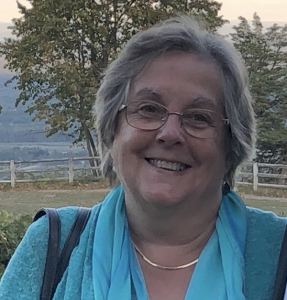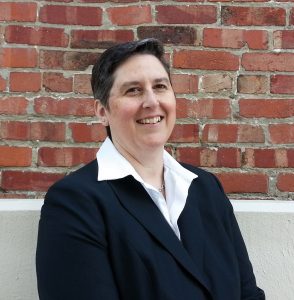Professor Janet Gray | Nancy Buermeyer – Public Health Advocacy in the Fight Against Breast Cancer
Health advocacy is an often-overlooked part of the work of public health specialists, but in many ways, it can be argued to have the greatest long-term impact on the population’s health. Here we look at the impressive work of Professor Janet Gray (Vassar College) and Public Policy Strategist Ms Nancy Buermeyer, working with colleagues at Breast Cancer Prevention Partners, the leading USA science-based policy and advocacy organisation to focus on preventing breast cancer by eliminating exposure to toxic chemicals and radiation linked to the disease.
Public Health Advocacy and Disease Prevention
The discipline of public health is focussed on population health and has social justice at its heart: working to address the fundamental determinants of poor health through reducing health, social and economic inequalities; improving access to healthcare and healthy environments; and encouraging everyone from individuals to governments to ‘do the right thing’ to ensure people have health and well-being as fundamental rights.
The role of public health advocacy is, therefore, to be a proponent for vital health issues, new research, or to highlight risks to health, often as part of a political or legislative process. However, it may also be educating the public about community, social or environmental factors that may compromise health-related conditions, and working to mitigate those factors.
Public health advocates are skilled in utilising and communicating about complex health and research information, alongside knowledge of policy procedures to shape future legislative and regulatory approaches. As such, public health advocacy has delivered some of the largest stepwise improvements in the public’s health in the past 150 years, including the introduction of urban sanitation (started in London to reduce cholera in the mid-19th century), workplace health and safety legislation, and the banning of smoking in public places in the 1990s. These are all good examples that have changed established social norms and values, and significantly prevented illness and death.

Breast Cancer Prevention Partners (BCPP)
Professor Janet Gray (Vassar College) is a scientific advisor for and Senior Policy Strategist Ms Nancy Buermeyer works for Breast Cancer Prevention Partners (BCPP). Founded in 1992, BCPP is the USA’s leading science-based non-profit organisation dedicated to the prevention of breast cancer by working to eliminate our exposures to toxic chemicals and radiation. In its health advocacy model, BCPP works to educate the public about links between environmental toxicants, many of which are found in common products used daily, and risk for developing breast cancer. It also engages in both market-based and policy initiatives aimed at eliminating exposures to harmful chemicals.
In the USA, breast cancer incidence has risen by 40% since the 1970s and affects one in eight women during their lifetimes. The rise cannot be explained by genetic factors alone, and therefore BCPP’s mission is to raise awareness of, and take action to reduce exposure to, the many environmental factors, specifically toxic chemicals and radiation, that are contributing to breast cancer. Here we explore some of the contributions by Professor Gray and Ms Buermeyer to the scientific understanding of these issues and BCPP’s advocacy work, including its ground-breaking breast cancer prevention policy agenda.

State of the Evidence
Professor Gray is a leading academic figure in breast cancer prevention, compiling the scientific evidence that provides the foundation for advocacy for progressive chemical policy reform to address chemical exposures to carcinogens and other toxicants in consumer products and our living and working environments.
Working with BCPP colleagues, Professor Gray led the team that published the latest version of the BCPP’s ‘State of the Evidence 2017: an update on the connection between breast cancer and the environment’. The regularly updated review is a centrepiece of BCPP’s work to raise awareness of their agenda and examines the continually growing and compelling scientific evidence linking radiation and chemical exposures to the increase in breast cancer incidence. The findings are both impressive and alarming.
The evidence cited leads to the inescapable conclusion that many common, everyday products and their by-products contain toxicants that can increase the risk of breast cancer. The report focuses on seven major areas of concern for BCPP: 1) hormones in pharmaceutical agents and personal care products; 2) endocrine disrupting compounds (EDC); 3) hormones in food (natural and additives); 4) non-EDC industrial chemicals; 5) tobacco smoking (active and passive); 6) shift work (light-at-night and melatonin); and 7) radiation.
There is a particular focus on reducing exposures from gestation through to early adulthood, as exposure-induced changes in genetic, epigenetic (relating to non-genetic influences on gene expression) and physiological processes in the developing mammary system can lead to a greater risk of developing breast cancer in later life.

Advocacy in Action and Policy Successes
As a Senior Policy Strategist at BCPP, Ms Buermeyer plays a major role in developing and implementing the public health policy and advocacy programmes for the organisation. This begins with utilising the evidence produced from the research described previously, to educate and inform the public and policymakers of the realities of breast cancer risks.
The comprehensive BCPP website (https://www.bcpp.org/about-us/) is a fantastic resource for information and guidance to support anyone interested in the subject (whether professionals, policymakers or members of the general public), to understand the issues and to be empowered to ‘take action’ for change. Accurate knowledge, when in the public arena, can be a powerful tool to change public opinion, to put pressure on policymakers and to counter the misinformation and misleading claims of those with a vested interested in maintaining the status quo.
An excellent example of advocacy in practice is the 2018 BCPP report ‘Right to know: exposing toxic fragrance chemicals in beauty, personal care and cleaning products’. In this report, BCPP set out to expose the hidden toxic chemicals in products in daily use, a situation enabled by the lack of USA consumer-protection legislation requiring the labelling of ingredients for cleaning products or fragrance in personal care products and reliance on ‘self-regulation’ by the manufacturers.
The testing of well-known products, especially those marketed at vulnerable populations (e.g., women of colour, children), endorsed by celebrities or marketed as ‘good for the environment’ or ‘green’ products, were featured to capture the greatest attention. A ‘top 10’ list of named commercial products, ranked as the most hazardous (defined as containing ‘the highest number of chemicals linked to cancer, hormone disruption, developmental and reproductive toxicity and respiratory effects’) was topped by a children’s shampoo marketed to children of colour, and included products endorsed by celebrities Taylor Swift and Jenifer Lopez, and designer Marc Jacobs. The report highlights the weak USA Food and Drug Administration laws and oversight that leave consumers largely unprotected.
For the companies exposed, the report and subsequent widespread news coverage were highly embarrassing and damaging to their reputation, undermining the carefully crafted deceits of their products being ‘gentle’, ‘natural’ and ‘sustainable’, for example. This information, leading to public awareness and action, can ultimately lead companies to reformulate their products to remove toxic ingredients.
In addition to press coverage, evidence from this report was important for the passage of the California Cleaning Product Right to Know Act, a bill that was shepherded through the California legislature by BCPP, in partnership with its allies. This is currently the only law in the world that requires manufacturers of cleaning products to disclose the chemicals in their products, on product websites this year and on the product packaging by next year. In an example of ongoing work at the governmental level, in June 2020, BCPP and co-sponsors Black Women for Wellness, CALPIRG and the Environmental Working Group were successful in lobbying the California State Assembly to approve the historic ‘Toxic-Free Cosmetics Act’ to ban a dozen highly toxic chemicals which are already banned in the EU, from personal care products sold in the state. If approved by the state senate, it will be the first such law passed in the USA.

Moving Forward: Combining Science, Community Wisdom and Advocacy
Over the past 4 years, Ms Buermeyer led the BCPP team in developing the ground-breaking ‘Paths to Prevention: the California Breast Cancer Primary Prevention Plan’, which was launched in September 2020. With input from academics, government regulators, non-profit organisations and impacted communities, Ms Buermeyer describes the ‘first of its kind’ report as, ‘a labour of love that combined science and community wisdom to identify 23 factors impacting breast cancer risk and provide recommendations on research to better understand them and, most importantly, policy interventions to reduce breast cancer risk in California.’
Paths to Prevention is unique in several ways:
- Focuses exclusively on primary prevention – stopping the disease before it starts.
- Calls for systemic solutions to decrease breast cancer risk factors rather than focusing on individual actions.
- Weaves together the wisdom of local communities and scientific evidence.
- Considers these issues and their potential solutions through a social justice lens to ensure everyone benefits from policy change.
A key element of developing the Prevention Plan involved BCPP staff travelling across the state to meet with members of marginalised, environmental justice communities who bear a disproportionate burden of toxic exposures. The wisdom and learnings from these community meetings are deeply embedded in the Prevention Plan.
The Paths to Prevention will provide a blueprint for BCPP’s work going forward. While focused on the state of California, the Prevention Plan will hopefully become a model for states across the USA. While focused on breast cancer prevention, the recommended policy interventions will reduce the risk of numerous other health issues. This is fantastic evidence that the work of public health advocates such as Professor Gray and Ms Buermeyer is bringing about meaningful population-level changes to reduce the unnecessary deaths and illness caused by breast cancer.
Reference
https://doi.org/10.33548/SCIENTIA544
Meet the researchers

Professor Janet Gray
Vassar College
Poughkeepsie
New York, NY
USA
Professor Janet Gray began her scientific career with a doctorate in Behavioural Neuroscience at the University of Massachusetts at Amherst in 1980. Since then, she has been at Vassar College, first as a National Institute of Mental Health post-doctoral fellow in the Department of Biology and then as a member of the faculty in the Department of Psychology. She is now is Professor Emerita in Psychology/Neuroscience. For the past 20 years, she has focused her non-teaching work on the relationships between environmental toxicants and risk for developing breast cancer. For ten years, she has served on the National Board of Directors for the Breast Cancer Prevention Partnership and was a founding member of its Science Advisory Panel. Professor Gray currently serves on the board of Clean and Healthy New York.
CONTACT
E: grayj@vassar.edu

Ms Nancy Buermeyer
Breast Cancer Prevention Partnership
San Francisco, CA
USA
Ms Nancy Buermeyer graduated from the University of Pittsburgh with a Bachelor of Science in Biology and earned a Master’s degree in Biological Oceanography from the University of Connecticut. She now works as the Senior Policy Strategist at the Breast Cancer Prevention Partnership (BCPP) at a state and federal level to advance public policy to reduce exposures to toxic chemicals, including ingredient transparency, funding for environmental health programs and updates to the Toxic Substances Control Act. Before joining BCPP, Ms Buermeyer spent over 20 years in Washington DC advocating for numerous causes, including civil rights for women and the LGBT community.
CONTACT
E: nancy@bcpp.org
W: https://www.bcpp.org/about-us/
FUNDING:
California Breast Cancer Research Program (CBCRP)
Generous individual donors to the Breast Cancer Prevention Partnership’s Science Leadership Circle
FURTHER READING
N Buermeyer, C Engel, J Nudelman, S Rasanayagam, H Sarantis, Paths to Prevention: The California Breast Cancer Primary Prevention Plan, Breast Cancer Prevention Partners, September 2020, Available at https://www.bcpp.org/resource/california-breast-cancer-primary-prevention-plan/
MC White, MMHE Kavanaugh-Lynch, S Davis-Patterson, N Buermeyer, An Expanded Agenda for the Primary Prevention of Breast Cancer: Charting a Course for the Future, International Journal of Environmental Health Research, 2020, 17(3), 714, doi:10.3390/ijerph17030714.
J Gray, S Rasanayagam, C Engel, J Rizzo, State of the evidence 2017: An update on the connection between breast cancer and the environment, Environmental Health, 2017, 16, 94.


Want to republish our articles?
We encourage all formats of sharing and republishing of our articles. Whether you want to host on your website, publication or blog, we welcome this. Find out more
Creative Commons Licence
(CC BY 4.0)
This work is licensed under a Creative Commons Attribution 4.0 International License. 
What does this mean?
Share: You can copy and redistribute the material in any medium or format
Adapt: You can change, and build upon the material for any purpose, even commercially.
Credit: You must give appropriate credit, provide a link to the license, and indicate if changes were made.
More articles you may like
Grandmothers: Innovation Through Tradition
Grandmother Project – Change through Culture (GMP) is an organisation dedicated to documenting the role of grandmothers and demonstrating the effectiveness of grandmother-inclusive strategies in improving the health and well-being of women, children, and adolescents. GMP’s groundbreaking work challenges conventional wisdom to transform community-based interventions in Africa and beyond, harnessing a powerful but often overlooked resource: the wisdom and influence of grandmothers.
Dr Robert Larkin | Cultivating Change to Improve Soil Health and Increase Potato Yield
Environmental quality and food production are facing the pressing challenges of climate change and global population growth. Dr Robert Larkin from the United States Department of Agriculture-Agricultural Research Service (USDA-ARS) and a team of plant scientists developed and tested a range of crop management systems to help overcome these compounding challenges. Their work is improving soil health and increasing the yield of potato crops, contributing to the future food security of nations.
Professor Giorgio Buttazzo | Artificial Intelligence and a Crossroads for Humanity
Where do we stand with artificial intelligence? Might machines take over our jobs? Can machines become conscious? Might we be harmed by robots? What is the future of humanity? Professor Giorgio Buttazzo of Scuola Superiore Sant’Anna is an expert in artificial intelligence and neural networks. In a recent publication, he provides considered insights into some of the most pressing questions surrounding artificial intelligence and humanity.
Dr Ralf Adam | New Technologies Shaping the Future of Oral Hygiene
Understanding the efficiency of various toothbrush technologies is essential for achieving optimal oral health. Dr Ralf Adam, who leads a dedicated team at Procter & Gamble in Germany, is keen to investigate the complexities of these technologies. His team have provided new insights into the best toothbrush types for plaque removal and the maintenance of gum health. By highlighting the importance of informed oral care decisions and ongoing investigations, this vital research works towards ensuring everyone can achieve a brighter, healthier smile.




